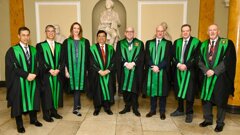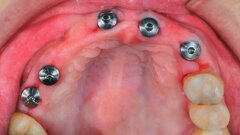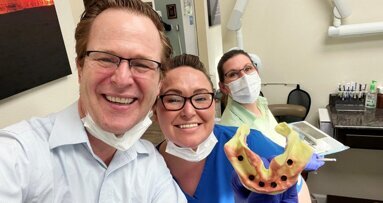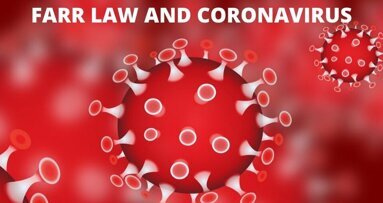A recent communication paper, titled "Community Water Fluoridation and the Integrity of Equitable Public Health Infrastructure" reviewed the 76-year history of community water fluoridation (CWF) in the U.S. and stated the need for its advocacy by dental professionals in the current scenario.
Centre for Disease Control and Prevention (CDC) defines CWF as "the process of adjusting the amount of fluoride in drinking water to a level recommended for preventing tooth decay."
CWF, as a dental program, is in a unique position to prevent caries across all socio-economic groups. Although not everyone has access to dental care, everyone in the U.S. can use public drinking tap water.
Dental caries, the most prevalent chronic disease globally, is known to disproportionately affect communities of lower socio-economic strata. Mexican Americans have the highest frequency of dental caries (73%) in the U.S., followed by non-Hispanic black children (54%). Caries prevalence is lowest in non-Hispanic white children (44%).
Many factors are currently leading to a decrease in the expansion of CWF:
- There is a growing misconception that caries is no longer a public health concern and that fluoridation is unnecessary.
- CWF involves political processes that make this measure challenging to implement.
- Opponents of CWF make incorrect claims about its adverse effects to shape public opinion.
Scientists have found no convincing evidence on the harmful effects of CWF. There have been claims that the prevalence of kidney disease and diabetes in Black Americans puts them at risk of fluoridation’s adverse effects. Scientific evidence has shown that these claims are false. These patients can drink optimally fluoridated water without any ill effects.
Using CWF, we can reduce the cavity rate at the population level by 25%.
Agnotologists (those that study culturally-induced ignorance) describe the current situation as being governed by active rejection or manipulation of scientific data.
To address concerns of mistrust, dentists should provide a clear explanation of scientific data. They should provide accurate information in a ‘health-literate manner to the public, who may doubt the program’s efficacy.
Dental associations are an essential resource for health workers to get information on CWF advocacy. Evidence-based resources like the ones stated below are available:
- 2018 Edition of Fluoridation Facts by the American Dental Association.
- CDC has a repository of fluoridation information and innovations in technology.
- Public Health 3.0, a model for public health infrastructure by the U.S. Department of Health and Human Services.
The U.S. Public Health Service (USPHS) recommends 0.7 mg/l of fluoride as the optimal water fluoride concentration. This concentration offers the most significant oral health benefit, without risk to other organs.
The cost of one person’s lifetime of water fluoridation is less than the cost of one dental filling in the U.S.
In July 2020, former chief dental officers of the USPHS wrote a letter supporting CWF to prevent dental caries and improve oral and general health.
CWF is, after all, the most cost-effective population-based tool to reduce tooth decay. It emphasizes the prevention of caries over costlier dental treatment.
Hence dental professionals need to promote community water fluoridation. According to the paper, dentists promoting CWF are critical in sustaining and expanding this program. We must use the best evidence on water fluoridation and share the science behind this vital practice.
References:
Tags:
Dental litigation is on the rise in India, placing growing legal and ethical demands on practitioners. This article explores the key factors driving this ...
Vinisha Ranna, lead author and student at Univeristy of Buffalo (UB) School of Dental Medicine discovered through her research that nearly 41 percent of ...
SYDNEY, Australia: Though recent bouts of rain have brought some much-needed relief to areas of Australia battered by bush-fires in the past few months, ...
Dr Giampiero Rossi-Fedele is currently a professor in endodontics at the University of Adelaide, South Australia, and since 2014 the course convener for the...
Many of the world’s greatest literary achievements were created with a pen or typewriter. And then, along came computers and word processing software such...
LONDON, UK: Despite dental settings presenting a significantly elevated risk of infection for those in and beside the chair, testing patients for the ...
'Farr Law' - an often ignored law in every epidemic hysteria - may throw some light on the pattern of epidemics including that of coronavirus (COVID-19) ...
This article is Part 2 in our series on dental litigation in India. In Part 1, we examined the rising trend of dental litigations and the increasing legal ...
LONDON, UK: Since the English government has decided to ease some of the COVID-19 restrictions just as the winter season has arrived, some professional ...
Live webinar
Mon. 12 January 2026
7:30 pm IST (New Delhi)
Prof. Judith Jones D.D.S; M.P.H., Prof. Kakuhiro Fukai D.D.S., Ph.D, Dr. Bathsheba (Bethy) Turton
Live webinar
Wed. 14 January 2026
10:30 pm IST (New Delhi)
Dr. Théo Laplane, Dr. Robert Gottlander DDS
Live webinar
Fri. 16 January 2026
10:30 pm IST (New Delhi)
Live webinar
Mon. 19 January 2026
11:30 pm IST (New Delhi)
Philipp Kopp, Michael Seeber
Live webinar
Fri. 23 January 2026
12:30 am IST (New Delhi)
Dr. Nicola M. Grande DDS, PhD
Live webinar
Wed. 28 January 2026
6:30 pm IST (New Delhi)
Live webinar
Wed. 28 January 2026
9:30 pm IST (New Delhi)
Prof. Dr. Jan-Frederik Güth



 Austria / Österreich
Austria / Österreich
 Bosnia and Herzegovina / Босна и Херцеговина
Bosnia and Herzegovina / Босна и Херцеговина
 Bulgaria / България
Bulgaria / България
 Croatia / Hrvatska
Croatia / Hrvatska
 Czech Republic & Slovakia / Česká republika & Slovensko
Czech Republic & Slovakia / Česká republika & Slovensko
 France / France
France / France
 Germany / Deutschland
Germany / Deutschland
 Greece / ΕΛΛΑΔΑ
Greece / ΕΛΛΑΔΑ
 Hungary / Hungary
Hungary / Hungary
 Italy / Italia
Italy / Italia
 Netherlands / Nederland
Netherlands / Nederland
 Nordic / Nordic
Nordic / Nordic
 Poland / Polska
Poland / Polska
 Portugal / Portugal
Portugal / Portugal
 Romania & Moldova / România & Moldova
Romania & Moldova / România & Moldova
 Slovenia / Slovenija
Slovenia / Slovenija
 Serbia & Montenegro / Србија и Црна Гора
Serbia & Montenegro / Србија и Црна Гора
 Spain / España
Spain / España
 Switzerland / Schweiz
Switzerland / Schweiz
 Turkey / Türkiye
Turkey / Türkiye
 UK & Ireland / UK & Ireland
UK & Ireland / UK & Ireland
 International / International
International / International
 Brazil / Brasil
Brazil / Brasil
 Canada / Canada
Canada / Canada
 Latin America / Latinoamérica
Latin America / Latinoamérica
 USA / USA
USA / USA
 China / 中国
China / 中国
 Pakistan / Pākistān
Pakistan / Pākistān
 Vietnam / Việt Nam
Vietnam / Việt Nam
 ASEAN / ASEAN
ASEAN / ASEAN
 Israel / מְדִינַת יִשְׂרָאֵל
Israel / מְדִינַת יִשְׂרָאֵל
 Algeria, Morocco & Tunisia / الجزائر والمغرب وتونس
Algeria, Morocco & Tunisia / الجزائر والمغرب وتونس
 Middle East / Middle East
Middle East / Middle East




























































To post a reply please login or register